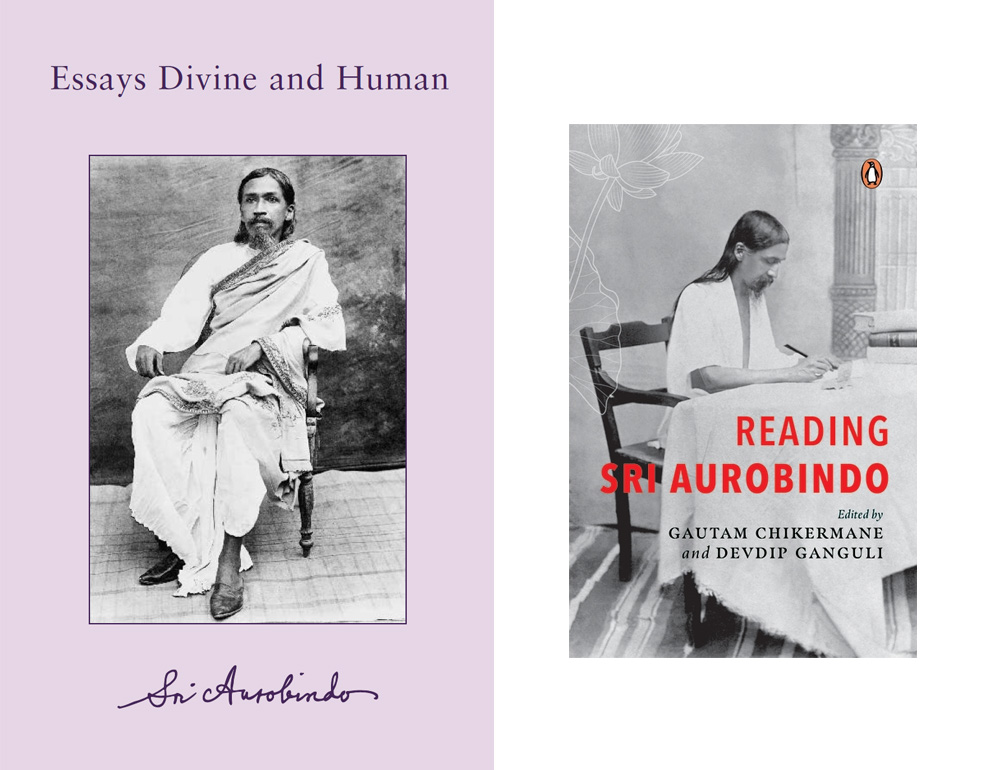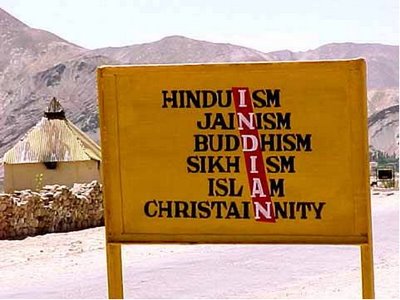This is a very interesting passage from Rajiv Malhotra’s book ‘Being Different’, taken from a chapter called Non-translatable Sanskrit versus Digestion.
This is perhaps some of the content that ought to have been part of our history exploration at school – how cultures spread, interact, and develop. The final bit below is a short examination of contrast – between how Sanskriti spread and how Western civilization spread. It is a bit crude, but quite true, and amply evident in much of India, especially in the South & in the huge Maoist corridor.
Sanskriti and Pan-Asian Civilization
“..Across India, for instance, the stories of Krishna are adapted into numerous local subcultures. The devi has a form localized for virtually every Indian village and often for every jati. Many festivals and rituals are adapted by local people in various parts of India, and this has resulted in an astounding diversity of regional and folk traditions becoming anchored in the traditions of Hinduism.
In the Pan-Asian context, there were exchanges, mutual influences and transformations among independent cultural traditions. Such exchanges occurred when these cultures encountered each other through exploration, trade, transplantation of knowledge systems, and so on, and were, for the most part, free from any deliberate or systematic agenda from any angle. Over time, there have been attempts to reframe and actively shape the new knowledge in the local context. This is why the Ramayana has been adapted and assimilated into many Asian cultures and languages. For instance, there is a place called Ayodhya in Thailand, and in Bali there is a ‘monkey forest’ where monkeys are worshipped as descendants of Hanuman, the monkey deity who worshipped and served Lord Rama.
From at least the beginning of the Common Era until about the thirteenth century, Sanskrit was the primary linguistic and cultural medium for the ruling and administrative circles from Purushapura (Peshawar) in Gandhara (Afghanistan and parts of Pakistan) to as far east as Pandurang in Annam (South Vietnam) and Prambanam in Central Java. It influenced much of Asia for more than a thousand years. Sanskriti was neither imposed by an imperial power nor sustained by any centrally organized Church ecclesiology. Thus, it has been both the result and cause of a cultural consciousness shared by most South and South-east Asians regardless of religion, class or gender.
Centuries prior to the Europeanization of the globe, the entire arc – from Central Asia through Afghanistan, India, Sri Lanka, Thailand, Cambodia, Vietnam and all the way to Indonesia – was a crucible of a sophisticated Pan-Asian civilization. In A Cultural History of India, A.L. Basham notes that
‘[by] the fifth century ce, Indianized states, that is to say states organized along the traditional lines of Indian political theory and following the Buddhist or Hindu religions, had established themselves in many regions of Burma, Thailand, Indo-China, Malaysia, and Indonesia’.
Years earlier, the British historian A.J. Toynbee remarked:
‘India is the central link in a chain of regional civilizations that extends from Japan in the far north-east to Ireland in the far northwest. Between these two extremities the chain sags down southwards in a festoon that dips below the Equator in Indonesia.’
However, unlike the violent spread of the Roman civilization which made Latin the European language for centuries, the Sanskritization of Asia was entirely peaceful, without conquest, domination, or subversion of local identities. This is not to say that political disputes and wars of conquest never occurred, but in most instances, the motive was not the imposition of cultural or religious homogeneity. The following passage from Arun Bhattacharjee’s Greater India elaborates on this point:
The unique feature of India’s contacts and relationship with other countries and peoples of the world is that the cultural expansion was never confused with colonial domination and commercial dynamism, far less economic exploitation. That culture can advance without political motives, that trade can proceed without imperialist designs, settlements can take place without colonial excesses, and that literature, religion and language can be transported without xenophobia, jingoism and race complexes are amply evidenced from the history of India’s contact with her neighbors…Thus although a considerable part of central and south-eastern Asia became flourishing centers of Indian culture, they were seldom subject to the regime of any Indian king or conquerors and hardly witnessed the horrors and havocs of any Indian military campaign. They were perfectly free, politically and economically, and their people, representing an integration of Indian and indigenous elements, had no links with any Indian state and looked upon India as a holy land rather than a motherland – a land of pilgrimage and not an area of jurisdiction.
Asia’s brightest students went to centres of learning in India such as Takshasila and Nalanda. King Baladeva of Indonesia was so supportive of the university in Nalanda that he made a generous donation to it in 860 ce. That a foreign king thousands of miles away in South-east Asia would wish to support a university in India underscores the importance of Pan-Asian scholarly exchange. Early Buddhist scriptures were in Pali and other Prakrit (local vernacular) languages, but later ones were composed in what is known as ‘hybrid Sanskrit’. There was a trend for using elegant Paninian Sanskrit for both verbal and written communication. The Tibetan script and grammar were developed based on Sanskrit and indeed are virtual mirror images of it. Along with the spread of Buddhism to Tibet came a vast complex of cultural elements – dogmas, philosophical and metaphysical ideas, religious and spiritual practices, forms of social organization, and a rich artistic tradition. Sanskriti has had an obvious influence on Thailand dating from 1500 ce. Sanskrit was used for public social, cultural, and administrative purposes in that country and other parts of South-east Asia. Today, Sanskrit is highly respected as the medium for validating, legitimating and transmitting royal succession and instituting formal rituals. Khmer society (in Cambodia) was highly Indianized, and the later Thai kings embraced the Indian religions and based their principles of government on Hindu practices.
The extent of Indian influence on China
China and India had a unique and mutually respectful exchange. Buddhist thought is the most notable and obvious import to China from India. The T’ang Dynasty (618–907 ce) opened the doors to Sanskriti from South and South-east Asia. The Indian influence over China reached its zenith in the seventh century when more Chinese monks and royal embassies came to India than in any other period. Nalanda University attracted large numbers of Buddhist monks from across Asia. The Chinese scholars at Nalanda studied not only Buddhism but also Vedic philosophy, mathematics, astronomy and medicine. The Chinese emperor gave liberal support to Chinese scholars studying at Nalanda. Numerous Indian texts were translated into Chinese and became established in Chinese thought.
Between 950 and 1033 ce, a large number of Chinese pilgrims visited India and absorbed the Sanskriti superstructure. They left inscriptions of their visits at sacred sites and constructed a stupa in honour of the emperor T’ai-tsong. Indian gurus and pandits meanwhile went to China where they were received with honour. The Chinese emperors appointed an official board of translators to translate Indian texts, and Indian scholars were commonly brought in to lead these efforts.
Buddhism’s spread across Asia is well-acknowledged, but beyond mere religion, this pan-Asian civilization also become a fountain of knowledge in fields as diverse as language, linguistics, mathematics, astronomy, medicine, botany, martial arts and philosophy. Indian astronomers were consulted in the preparation of official calendars. In the seventh century ce, three astronomical schools known as Gautama, Kashyapa and Kumara flourished in China. That nation had already adopted the Indian theory of nine planets. Also, key Sanskrit astronomical, mathematical and medical texts were translated in the T’ang period. The distinctions between Buddhism and Hinduism in doctrines, practices and institutions were blurred and considered relatively unimportant by the receiving cultures. In China, for example, Buddhist missionaries were venerated as much for their brahmanical learning as for their monastic vows. Historians generally refer to this large-scale export of Sanskriti as the export of Buddhism, which dilutes the role of dharmic culture in general.
The arts were also centres of confluence of Chinese culture and Sanskriti and gave rise to the school known as Sino-Indian art. This school became prominent in the Northern Wei period (386–534 ce), and there are a number of rock-cut caves at Thunwang, Yun-kang and Longmen with colossal images of Buddha 60 to 70 feet high, as well as fresco paintings. The inspiration came not only from the images and pictures that were imported from India (from Ajanta and Sarnath, for example) but from the Indian artists who visited China. Indian musicians also travelled to China and even Japan to share their talent, including some who were sponsored by the Chinese emperors. Two principal types of music – Bodhisattva and Bhairo – were taken from China to Japan by an Indian musician named Bodhi during the T’ang period. Thus, sanskriti preserved the uniqueness of each culture it influenced.
How Western civilization spread, in stark contrast
Christian inculturation was part of a politico-religious design imposed from a centre located in another part of the world. This distant Christian nexus often had economic and political interests which diverged from those of the local population. The purpose of conquest was to exploit whatever served the colonizer’s interests. The asymmetries between the conqueror and the conquered and between the colonizer and the colonized become cultural markers. Those who resembled the conqueror or colonizer enjoyed greater status than others. Clearly, under European rule, native converts to Christianity enjoyed better social benefits and more prestige than those from the same community who did not convert. The overriding design, easy to recognize in retrospect, was the incorporation of all peoples of the globe into a universal history – an agenda still pursued through overt conversions as well as Western universalism.
This difference between the way Sanskriti and Western civilization spread may be restated in business terms using the analogy of ‘push’ versus ‘pull’ marketing. Push marketing consists of intrusive advertising, door-to-door sales calls, tactics of intimidation, pamphlet campaigns, posters to invite prospects, junk mail solicitation (including spam), telemarketing calls, negative political campaigns and other manipulative strategies. In many instances, these methods are unethical or even outright unlawful. The spread of Christianity, and later of Islam, was achieved largely by such heavy-handed and aggressive means. To this day, Christian organizations, much like multinational enterprises, continue to set targets for conversions for every district of India (among other countries) with budgets calculated in terms of cost per conversion. ‘Soul harvesting’, as it is officially called by the Vatican and various Protestant evangelicals, is like any multinational drive for market share.
Pull marketing is when the product demand drives the transfer without pressure or intimidation from the supplier. The consumer takes the initiative to find and approach the supplier. Common modern examples include searching classified advertising for a defined need, such as the use of yellow pages, eBay, and other sources sought out by the buyer.
In the case of sanskriti, the receiving cultures found assimilation to be highly advantageous and sought out Hindu–Buddhist itihasa (narratives of the past), Puranas, symbols, rituals, doctrines, ideas of governance and aesthetics from the Indian mainland. The best evidence of this is that for more than a thousand years, the rulers of China, Tibet, Thailand, Myanmar, Cambodia, Vietnam, Sri Lanka and other nations sent their brightest students to the viharas (educational institutions) of India.




